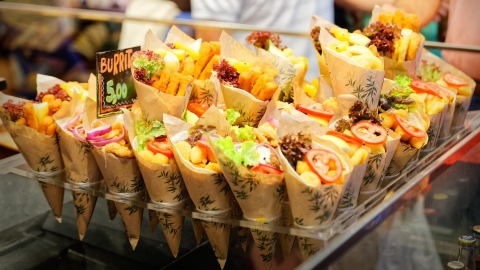National dishes
Malaysian cuisine is formed from the blend of culinary styles between three ethnic groups: Malaysia, China, India and is more or less influenced by the Indonesian, Thai, Singaporean, Portuguese, Dutch, British communities... Therefore, Malaysia's multi-ethnic dishes are quite rich, attracting tourists in terms of sight, smell, and taste.
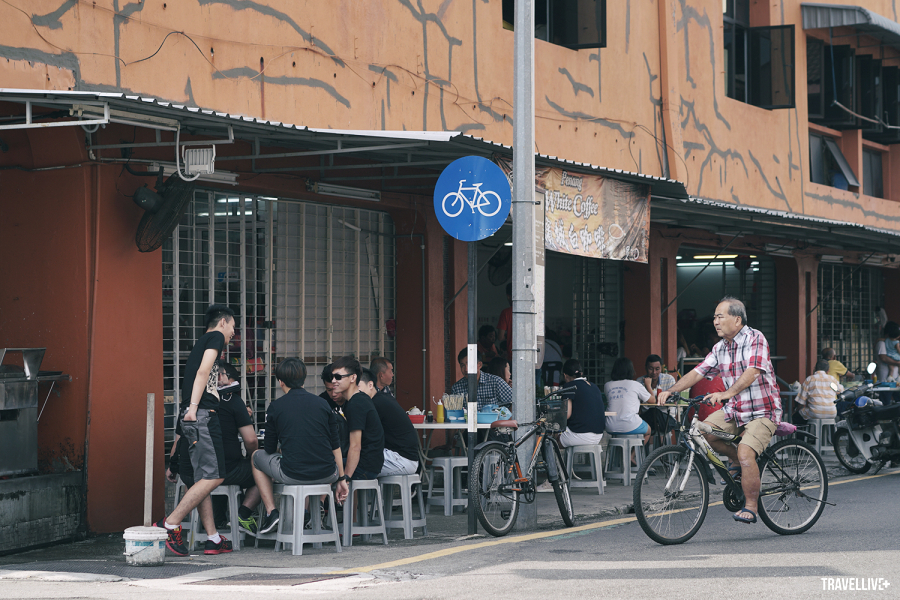
A national dish that can be mentioned is assam laksa - the most famous noodle dish in Penang with large, chewy egg noodles and a broth made from mackerel with a sour taste from tamarind and a spicy taste from chili, ready to "tear" the diners' tongues but after eating it once, they will remember it forever. There is also nasi kandar - a dish of Indian origin consisting of rice served with fried dishes such as fried chicken, fried fish, fried squid, fried shrimp... and drizzled with different types of curry sauces according to preference. The most common vegetables are okra and eggplant. Rice used for nasi kandar is usually stored in a wooden barrel and has a distinctive aroma. According to the documents I looked up, "nasi" means "rice" and "kandar" means "shoulder pole". The reason for this name is because in the past, street vendors often carried two baskets of rice on their shoulders to sell.
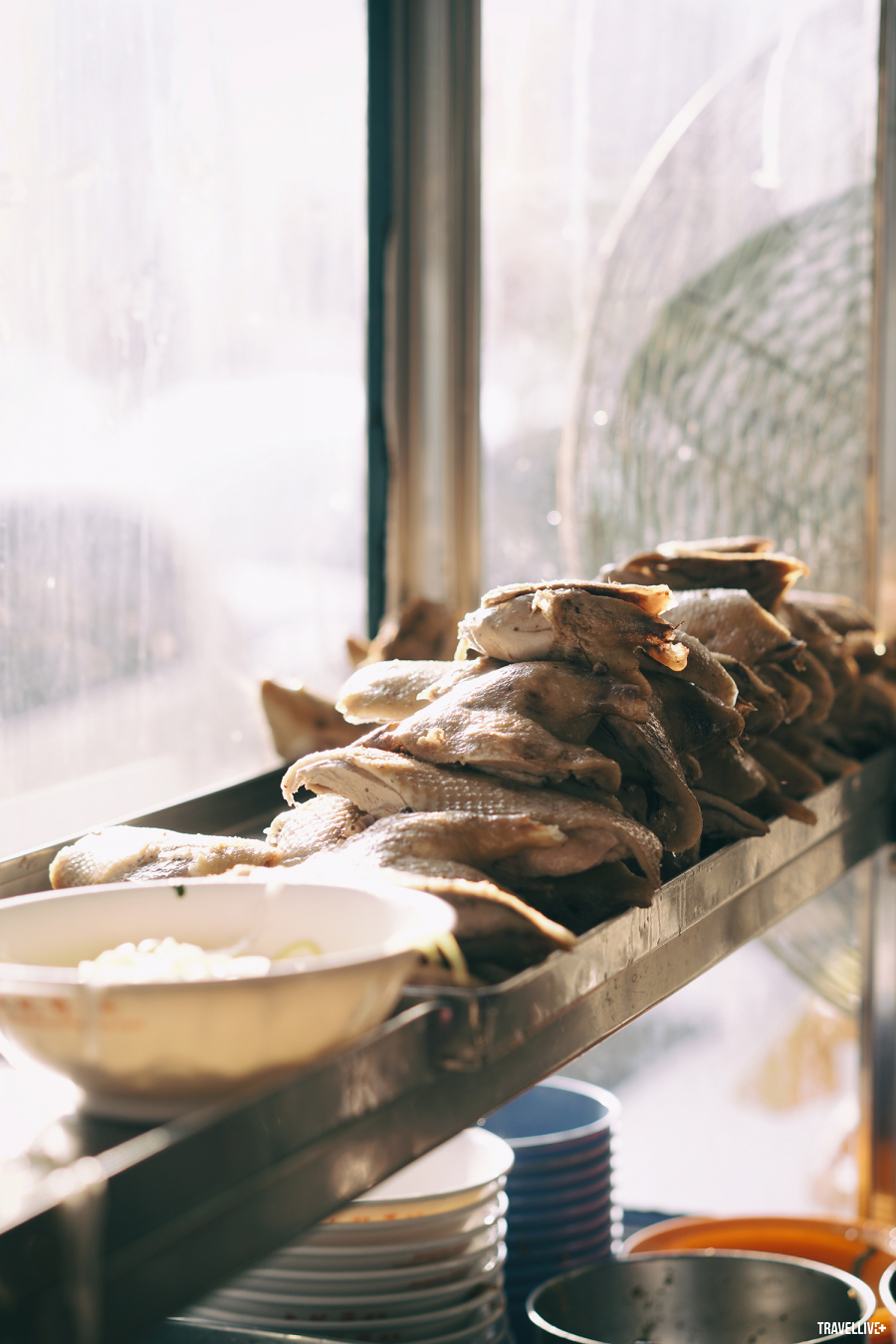

Malaysia has many special dishes such as Satay - pieces of meat marinated in rich flavors, skewered on bamboo sticks, grilled over a charcoal stove until fragrant, served with peanut butter sauce; or Hokkien mee - a noodle dish originating from Fujian, with variations depending on the region in Malaysia. Many other dishes such as char kuey teow (stir-fried rice noodles), wonton mee (wonton noodles) are also familiar in other countries but have their own unique flavors.
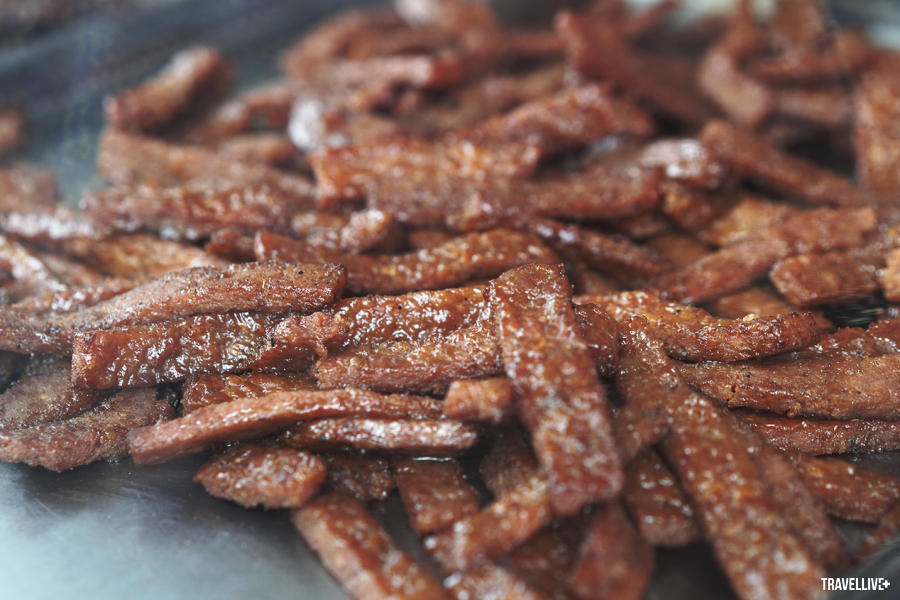
Peranakan Specialties
Famous worldwide for its diverse cuisine, but not everyone knows about another very unique culinary style in Malaysia: Peranakan (also known as Nyonya). Peranakan is a group of Chinese people who settled in Penang, Malacca, Singapore, and Indo and married local Malaysians, creating a unique culture that blends Chinese and Malaysian.
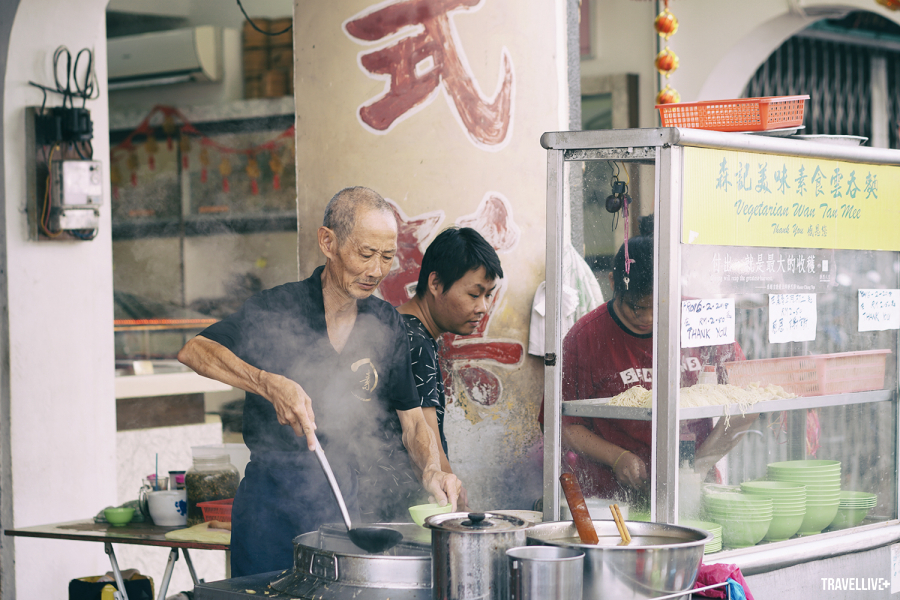
Peranakan - a very unique culinary style in Malaysia
Peranakan cuisine is considered a “specialty” of George Town, the capital of Penang. What makes the difference is the seasoning – a mixture of many different ingredients. If the prominent flavor in Malaysian dishes is the flavor of coconut milk, Peranakan dishes have a strong sour taste from tamarind.

Seasoning is what makes the difference in Peranakan dishes.
My mother and I dined together at a famous Perakenan restaurant in Penang, enjoying salmon mixed with carrots and seaweed, papaya salad with soft-shell crab, spring rolls, lamb stew, fish stew - cooked with or served with a suitable thick sauce, and finally dessert of purple sweet potato rice balls with black sesame filling. The dishes were all elaborately prepared and processed so that they were not only delicious when enjoyed but also had a lingering aftertaste.
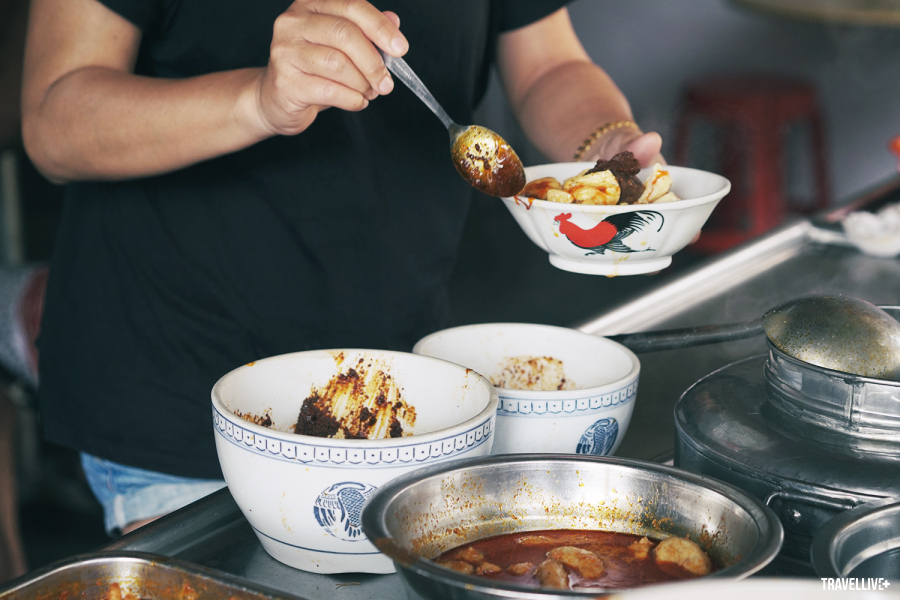
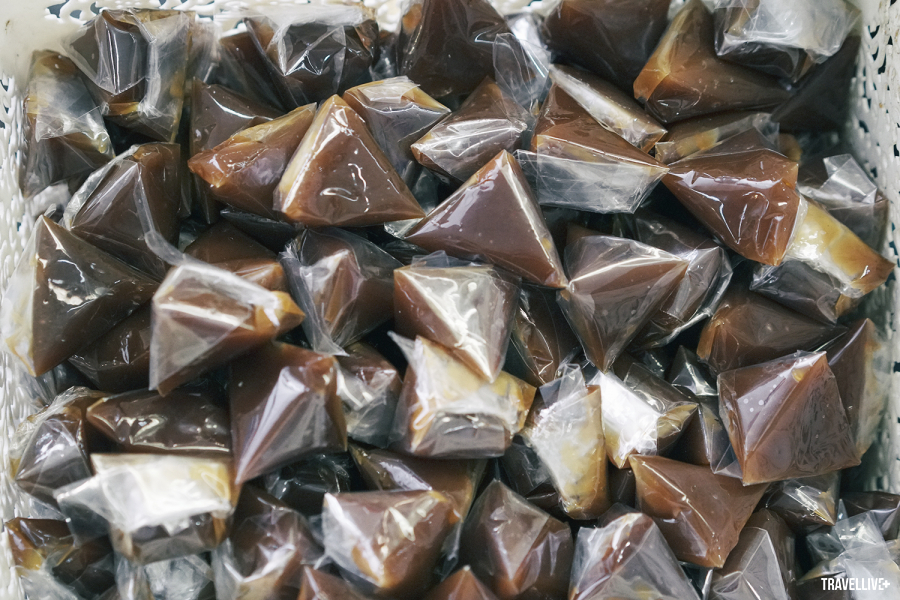
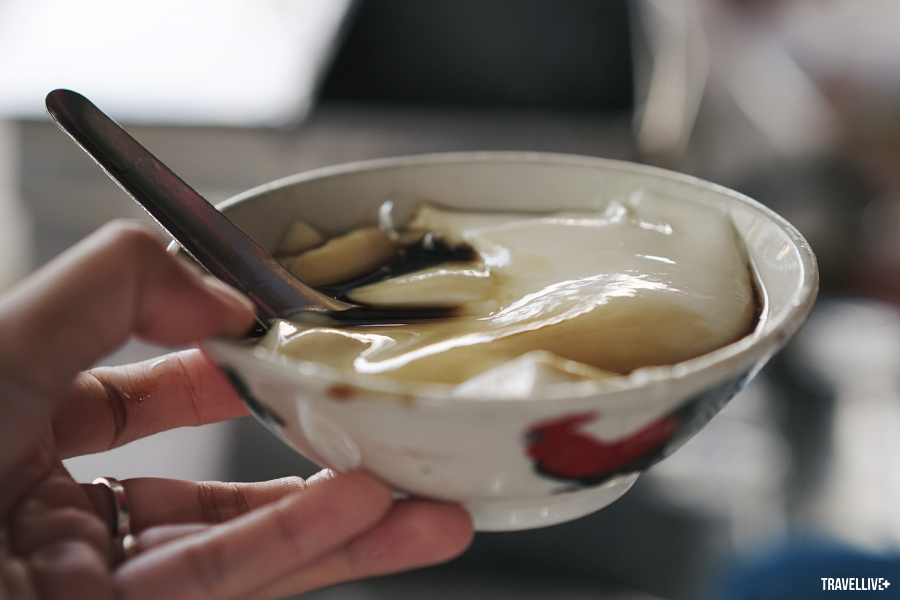
Satisfied with the culinary street
The most famous food streets in the old town of George Town are Chulia and Kimberly. The best bowl of laksa I had was at Edelweiss Kafe. The restaurant's Asian-European design has elevated the laksa to an international level. I've always loved traditional dishes, but I also like dishes cooked in a lighter, more refined way. The bowl of laksa here completely convinced me, without the fishy smell.
The aroma of baked goods and herb eggs will linger if you pass by Ming Xiang Tai pastry shop - a shop that makes handmade cakes and traditional Cantonese pastries and cookies. I bought a chicken pastry and an egg tart. My mistake that day was not eating more.
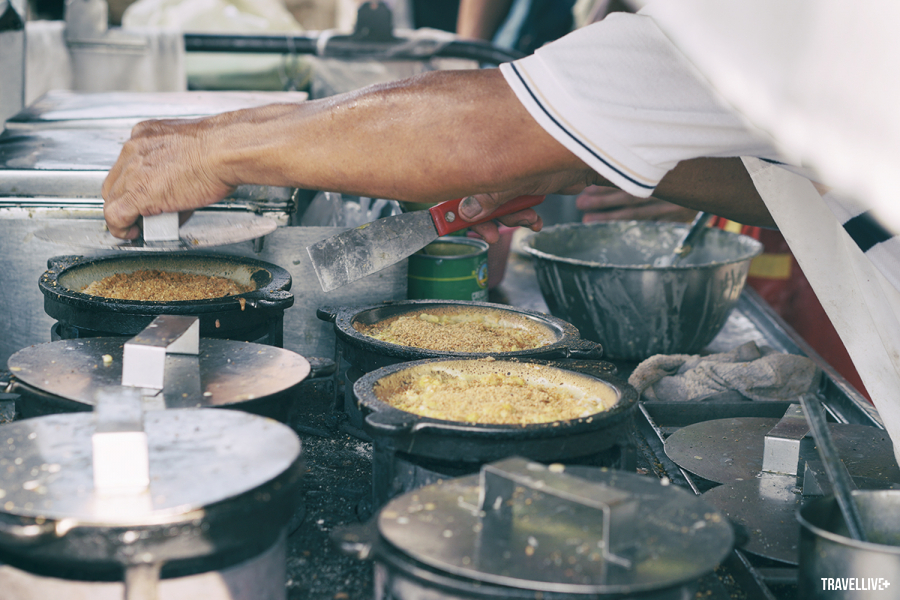
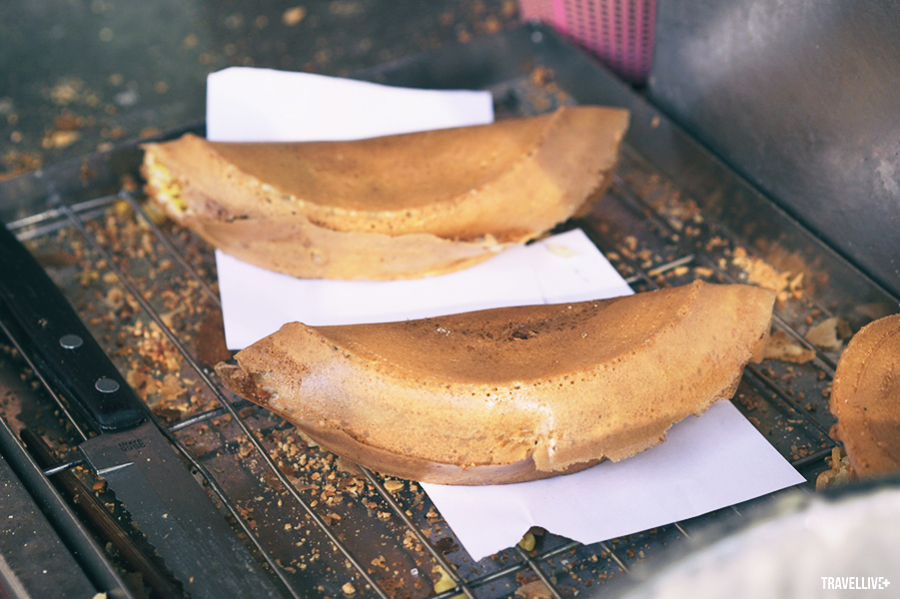
What if you are tired of rich dishes? In a place filled with Chinese - Indian - Malay - Peranakan dishes, Japanese dishes have an extremely modest beauty. And the small restaurant with about 20 seats and only vegetarian sushi - Sushi Kitchen - increases the modesty of Japanese cuisine many times over. The restaurant's style is not special, but the menu, although only full of vegetable dishes, still makes me crave every time I read the description, wishing I had a bottomless stomach and a huge wallet to try all the dishes.
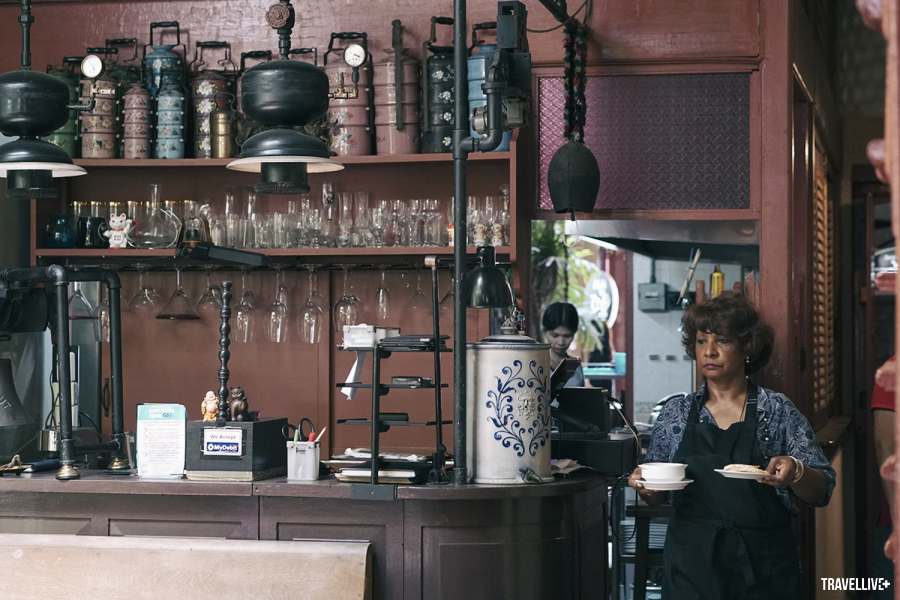
I believe you will also want to try a giant bowl of ramen at My Voice. I “heard” the aroma of starch and soup wafting through the hot air of the first day of the year and just like that, I led my mother to follow the call of my rumbling stomach. The ramen noodles were just cooked, still retaining their chewiness. The soup had the sweetness of vegetables and the richness of miso. On top of the bowl of noodles was a layer of shimmering and fragrant sesame oil. If I were to rate it, I would immediately give it 11/10 because it was so satisfying.
Amazed with street food
On the last day in Penang, on the way from Beach Street to Pasar Chowrasta, my mother and I kept saying “oh” and “ah” in delight and stopped to have breakfast at a duck noodle shop. A bowl of duck noodle has noodles, shredded duck meat, fish balls, onions, cilantro, and no vegetables, because all the delicious, sweet, nutritious, and quintessential ingredients are in the broth. After that, we continued to have breakfast at a banh cuon shop because we couldn’t resist the nimble hands of the shop owner.
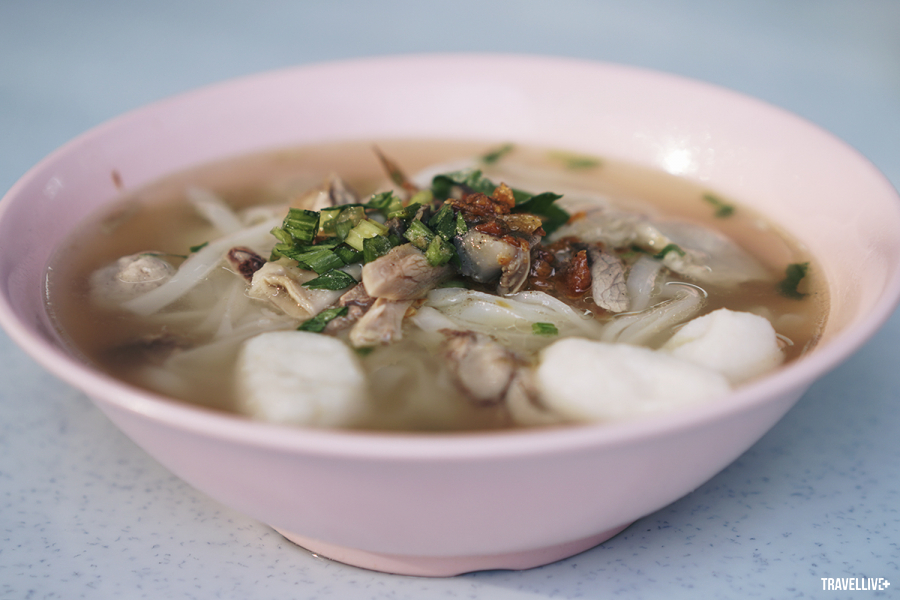

Pasar Chowrasta is a long-standing market in Penang that opens from 7am to 12pm every day - where you can find interesting ingredients and enjoy unique street food.
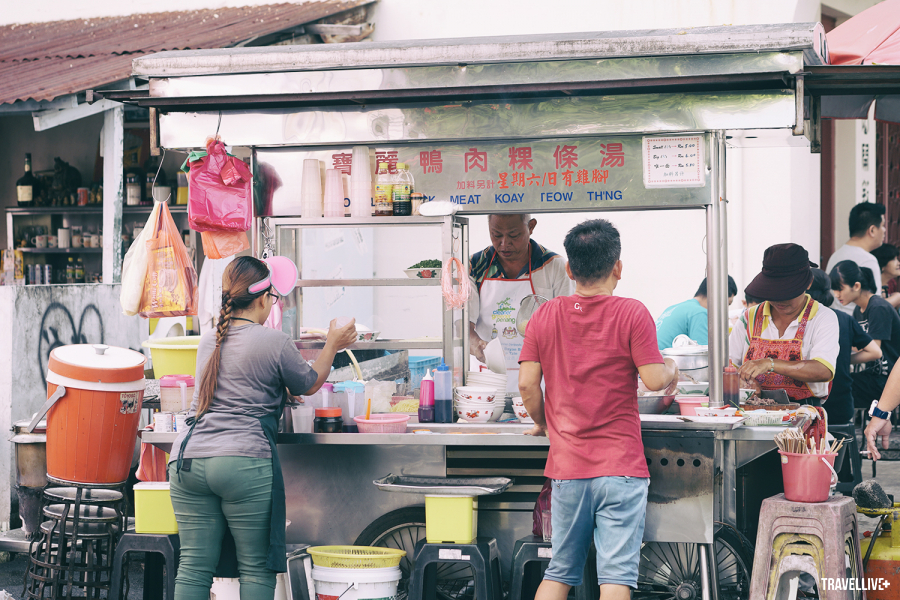
The next dish I “eat” is fried dough - this dish here is not woven into cakes like in Vietnam but is still loose so it is easy to put in a funnel-shaped paper roll to hold in hand; and… peanut egg cake - a cake with a thick crust, crispy edges, spongy with a soft, fragrant crushed peanut filling; tofu served with syrup made from molasses; soy milk served with molasses; bakkwa - a dried meat dish that is still moist, has a salty and sweet taste, usually rolled thinly or cut into small pieces.

I had to sadly pass by the wonton noodle vendor who was boiling bright yellow noodles; the char siu pork vendor who was chopping glistening pieces of meat; the middle-aged man at the stir-fried noodle stall was wrapping each portion of noodle in banana leaves with bean sprouts, chili, dried fish, and Sambal chili sauce; and the woman standing behind the glass of the curry noodle cart was waving her hand to greet them.
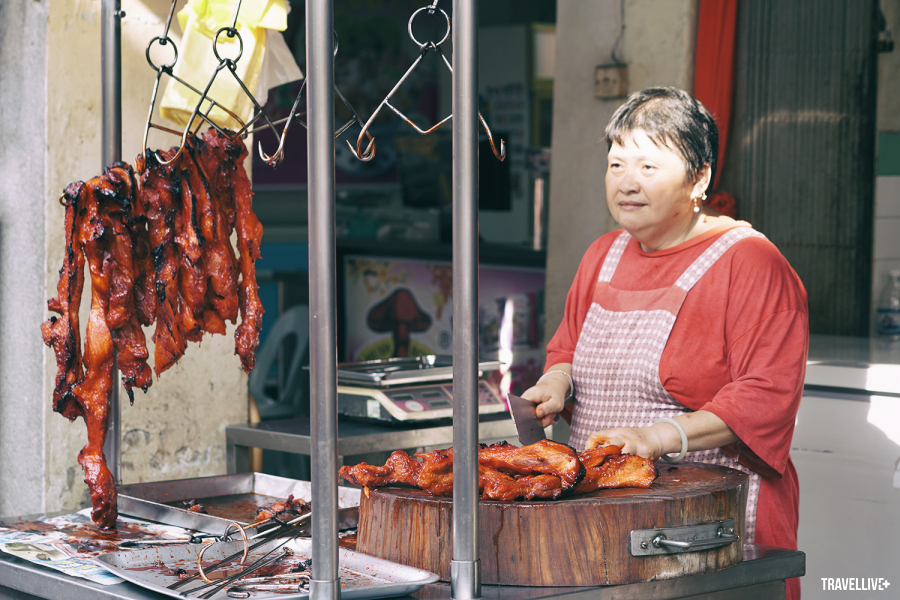
My mother and I needed to save some room to go back to Queen Street, to a humble curry shop with old and shabby tables and chairs that we had just found last night, to taste again the fish curry with chapathi (Indian flatbread), and drink two more cups of fragrant, fatty, rich Malay milk tea before returning to pack our luggage because the short vacation would really end tomorrow.
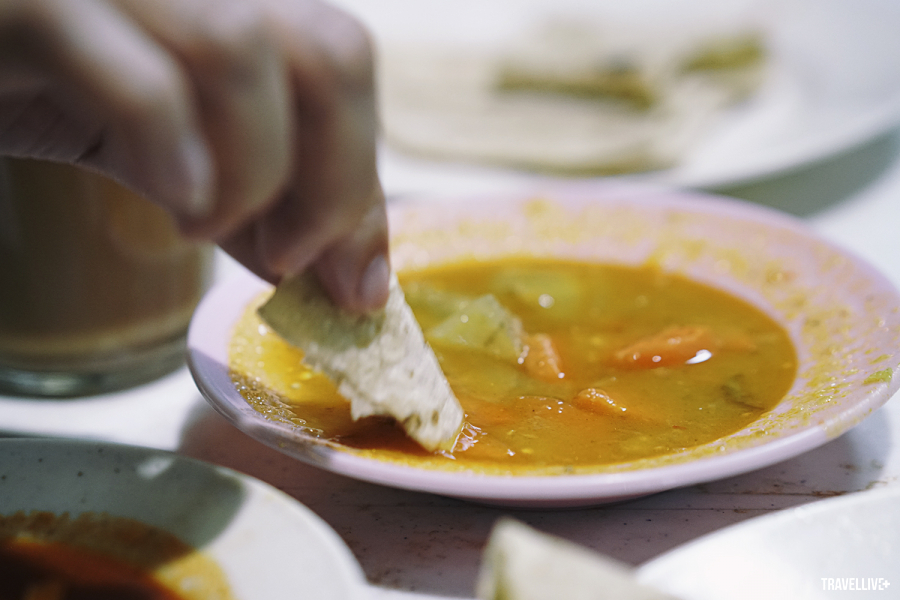
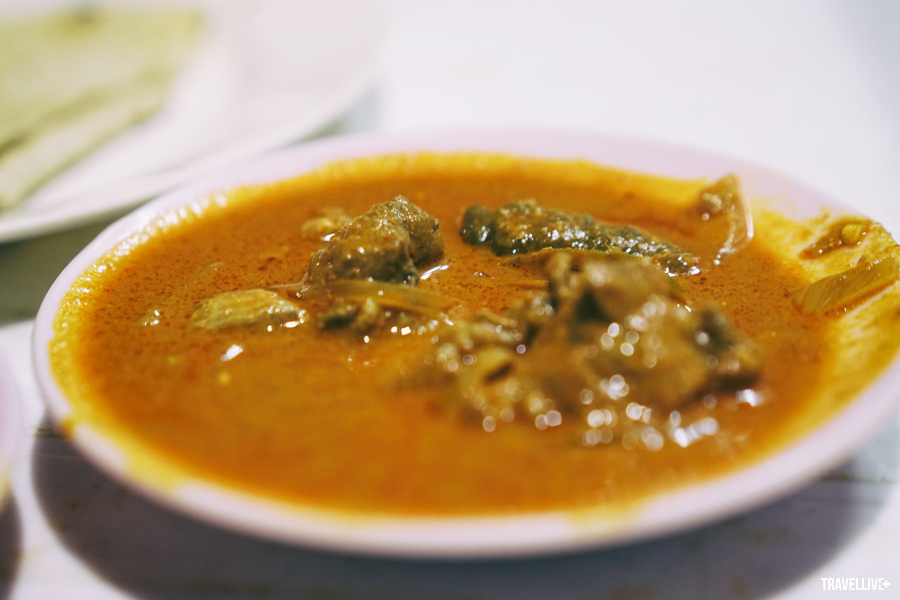
In this Muslim country, dishes are mainly made from beef, goat, fish and most of them are well-cooked, but that is absolutely no obstacle to the development of the unique cuisine here. Malaysians - specifically Penangites - can eat up to six meals a day, including breakfast, a few light snacks before lunch, lunch, a bowl of noodles at 4-5 pm, a main meal in the evening, and an extra meal at 10 pm. It must be said that cuisine is an inseparable part of the daily life of Malaysians. They love to eat! Really! They eat non-stop and they make tourists here eat non-stop too. I wonder, what taste will a person living far away remember the most - spicy, hot, warm, fatty, sweet, sour, or... all?


























